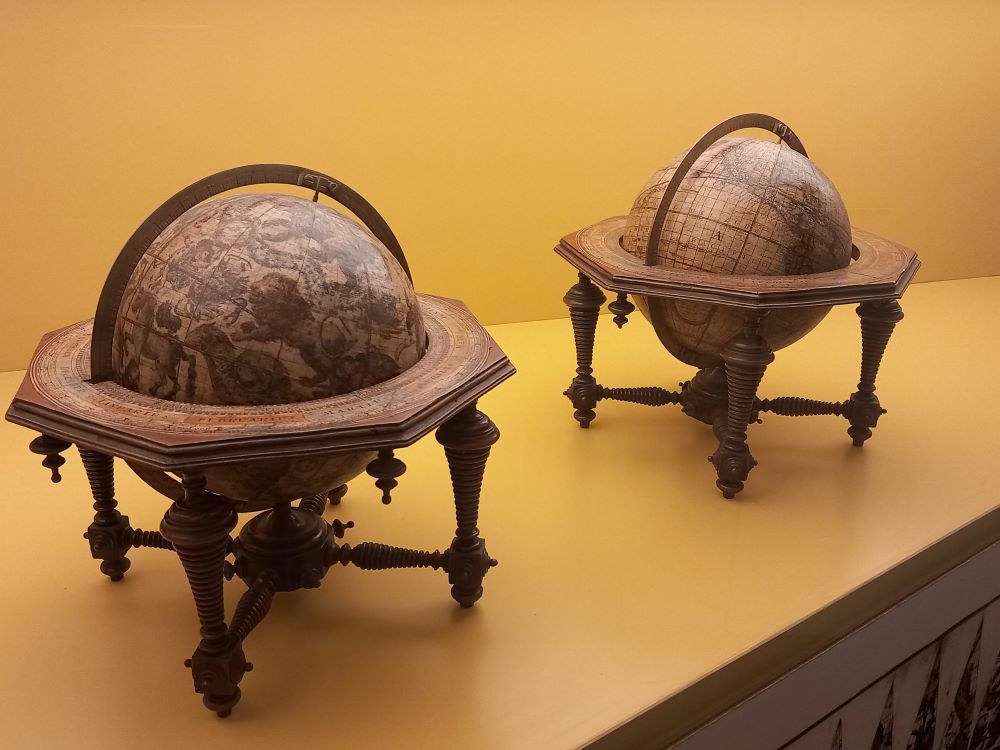I thought the winter chill would keep tourists away from Vienna at Christmas, but how wrong I was. The city was absolutely packed, the museums had long lines and there were queues of groovers taking selfies outside several famous cafés. Every restaurant was booked out for dinner in the city centre, and the in legendary Christmas Markets (which I soon realised brought the crowds) there was standing room only as soon as they opened at 10 am right through to the last glühwein.
So, it was with unconcealed delight that I found myself almost alone in the museum I had looked forward to most: the Austrian National Library’s Globe Museum.
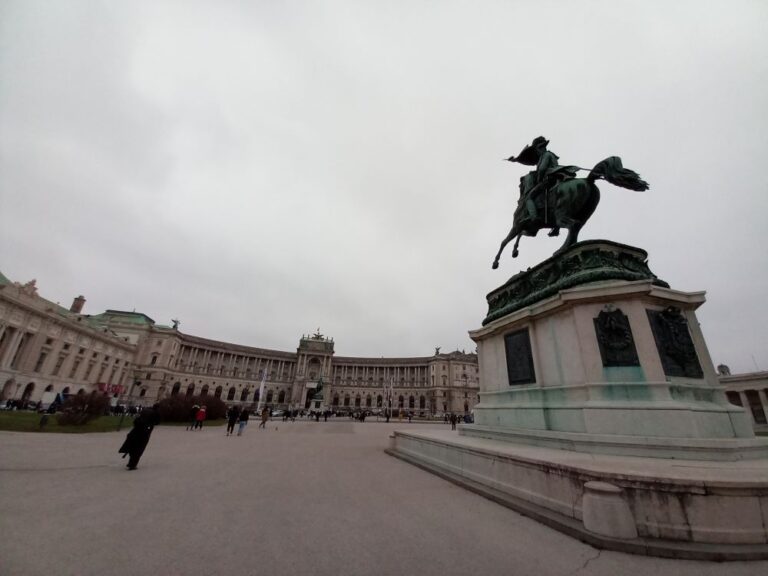
Located in the gorgeous baroque Palais Mollard just off the Herrengasse, the Globe Museum forms a part of the sprawling National Library complex, all housed in resplendent grand imperial palaces in wonderful states of repair.
It claims to be the largest collection of globes available for public viewing in the world, and after a couple of hours there, I would not argue with that. There are over 250 terrestrial (of the earth) and celestial (of the heavens) globes on display in all shapes and sizes, and all of merit. No padding out of the collection. All are works of cartography, craftsmanship and art. It really is a very sophisticated and fascinating display, put together and presented by a team that know their globes.
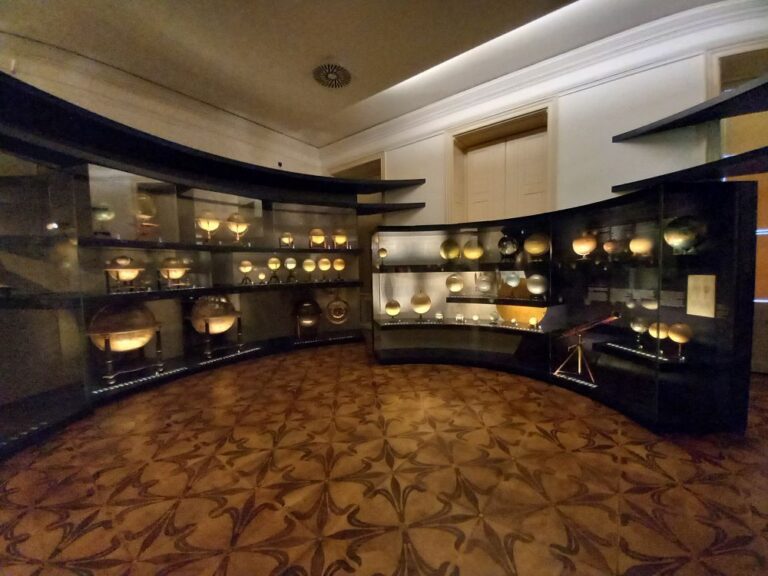
Age of globes is perhaps the principal determinant of their fame. When you consider that the Greek and Romans had a very limited understanding of the physical world beyond Europe and that a thousand years of Dark Ages then ensued, a world globe that is 500 years old is pretty amazing. The Portuguese; the first explorers to be able to roughly define the five core continents only did so by around the mid-sixteenth century, and so the oldest globe in the museum’s collection, a 37 cm diameter piece dating from around 1535 by Dutchman Gemma Frisius is very remarkable. He had a great impact on upcoming cartographic giants like Mercator and Ortelius.
You also have to have some sympathy for the old globemakers of this early era, trying to make sense of scattered navigators reports made without the benefit of proper longitude measurements, all in an age where the secrecy of new discoveries was guarded for decades.
As an antipodean, I find it is always worth looking for the Great South Land on globes or maps, as it shows you roughly their age. Part of Terra Australis first appeared on a world map in 1622. A lot of the globes here had no sign of Australia.
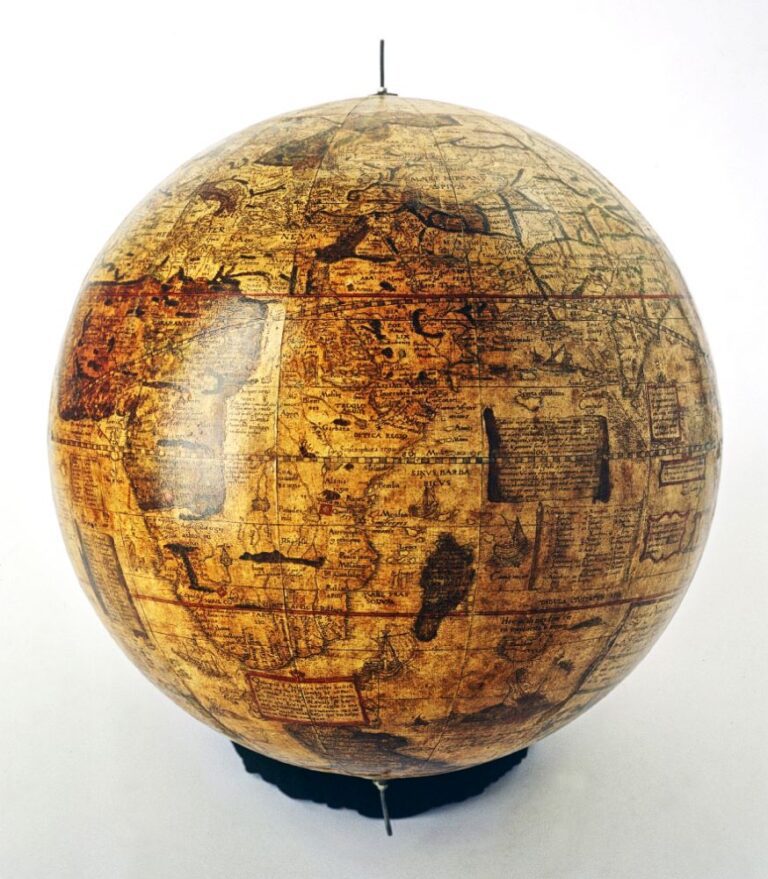
There are many useful displays (in German and English) on the history of globes, how they were made (the oldest were woodcut and hand painted engravings), and their pros and cons. A globe mirrors the spherical earth, so it is the best way to present the world in its real form, without the complications of projecting an oblate spheroid on to a flat page. But the problem is that the scale makes the level of detail correspondingly difficult, and one display makes the point that a common-sized 32 cm globe portrays 400 km of the earth’s surface in just one centimetre.
Some of the globes present get around the scale issue by being larger. A great deal larger. A delightful pair from Vincenzo Coronelli dating from the late 1600’s and representing the earth and the heavens are over a metre wide. Venetian Coronelli was a famous supplier of globes to the courts of Europe, made this pair for Austrian Emperor Leopold I, and they graced the library of his foremost palace. Coronelli also gives his name to the unique International Coronelli Society for the Study of Globes based in Vienna.
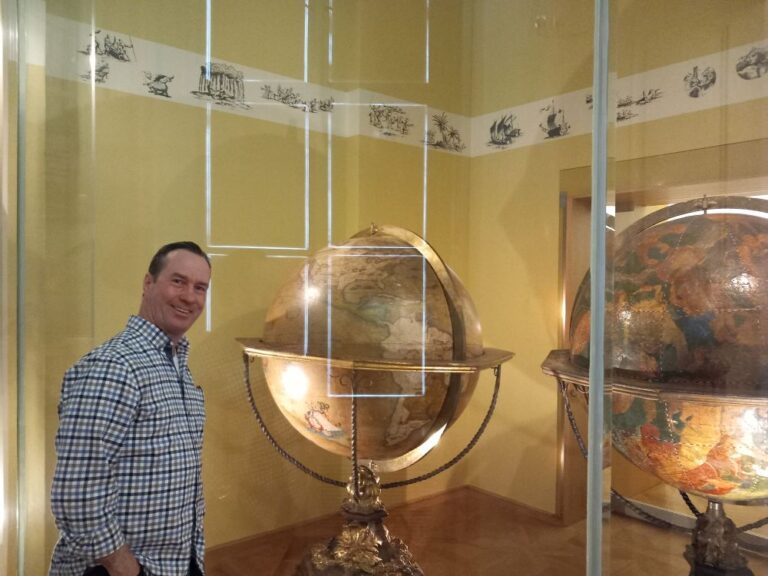
As the foremost public repository for globes in the world, the Globe Museum in concert with the Coronelli Society acquire historic examples when possible, adding to the current collection of 820 pieces. They also attract temporary and permanent displays of private collections, a number of which were on display when I visited, including the very impressive Rudolf Schmidt collection which includes Frisius’ old globe.
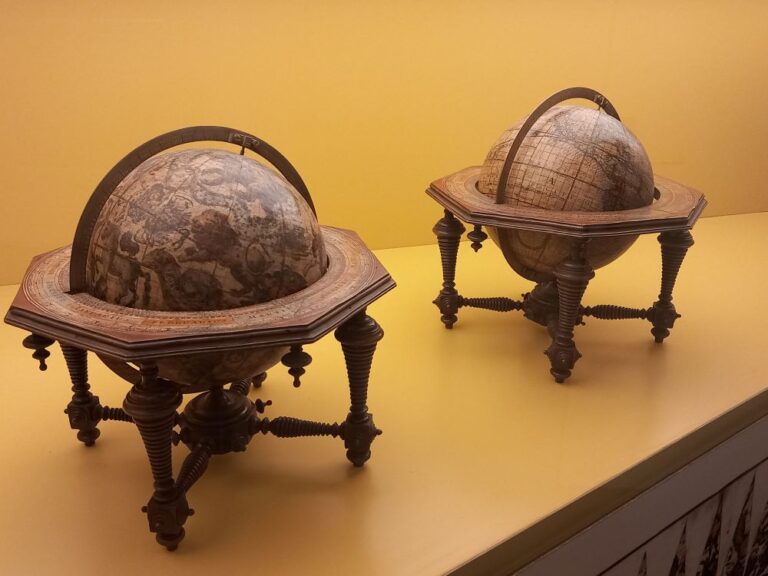
You wander through amazing baroque rooms with incredible artwork over the high ceilings, all filled with cabinets of globes large and small, bright and faded, old and even older. There is an interactive experience where you can stand in front of a 1541 Mercator globe and play with a digital version of it, zooming it in and out and putting your grubby fingers all over the screen, rather than the priceless exhibit itself.
And the collection hosts not just globes, but a variety of associated instruments with cartography and the heavens, like armillary spheres and, my favourite, planetariums. And if you would like to get hold of a decent planetarium or orrery, get in touch with Orrery Design.
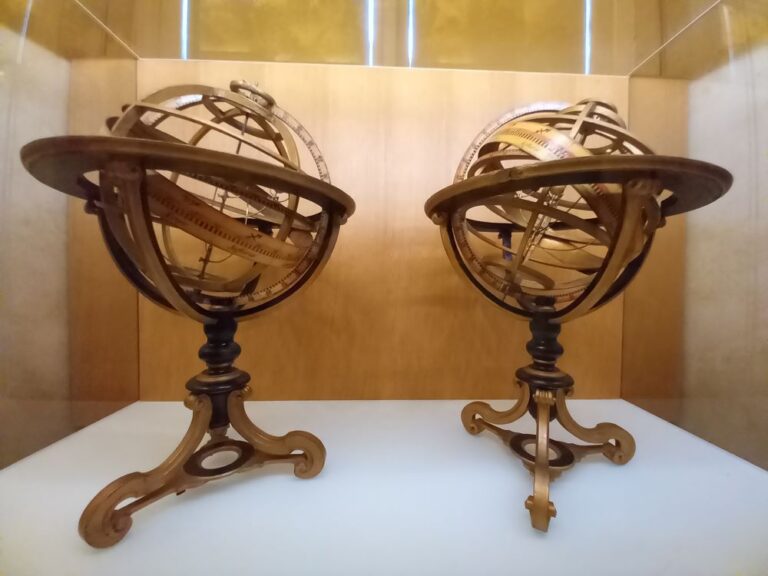
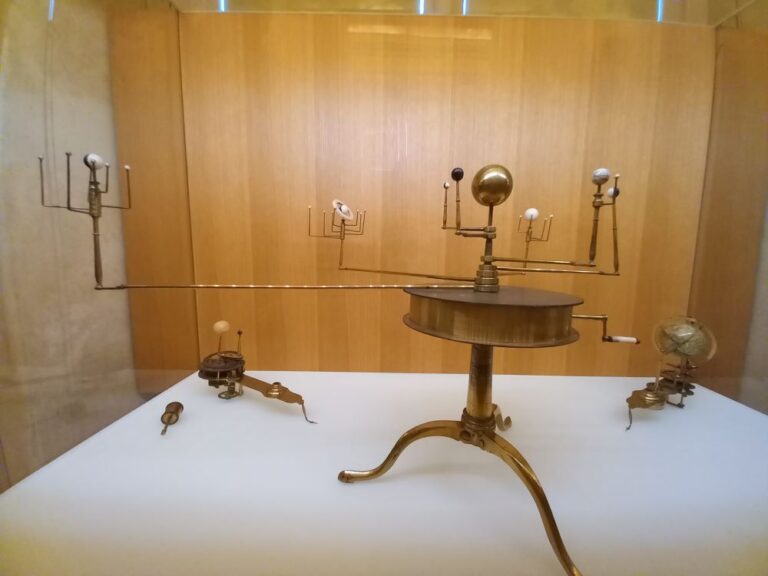
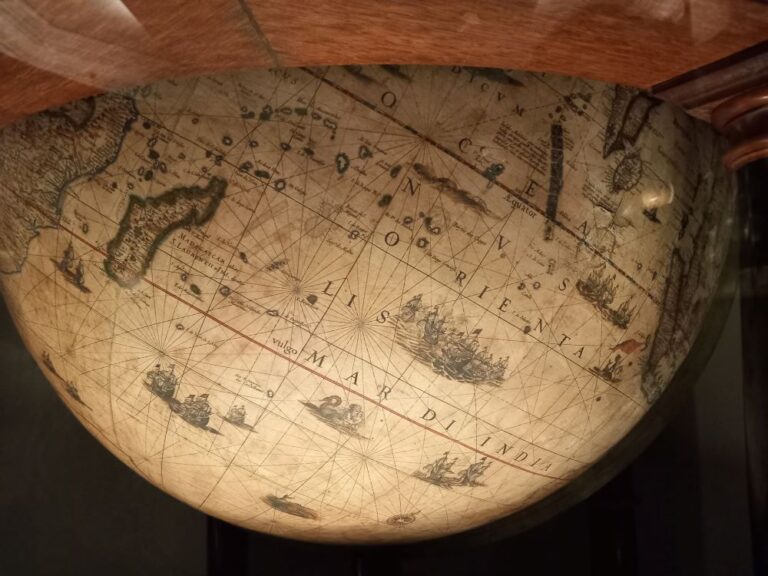
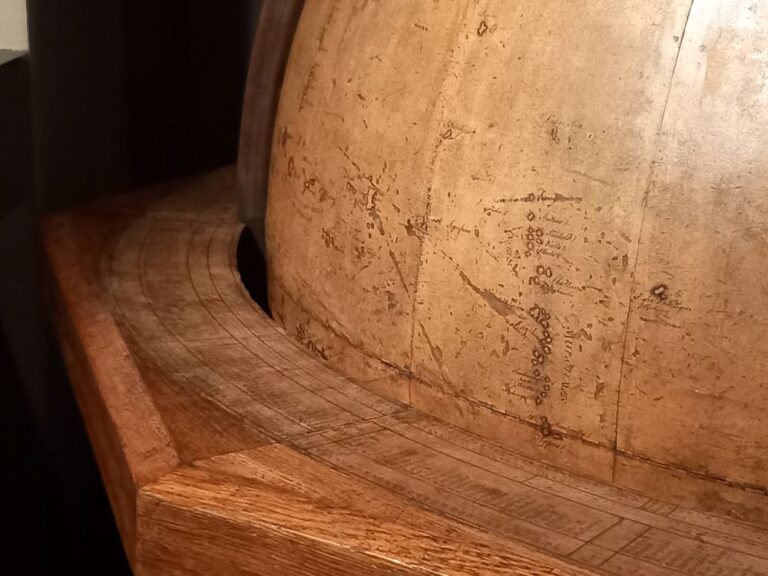
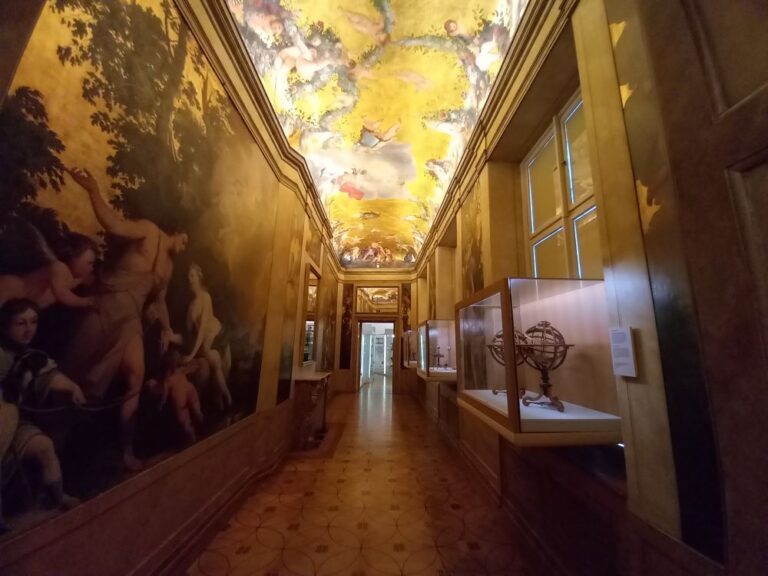
Ah, I could have stayed longer, but it was midday and had to battle for some food at one of the markets. If you are ever in Vienna, and the queues are too long elsewhere, and you do have a passing interest in maps, try the Globe Museum. You will not be disappointed.

